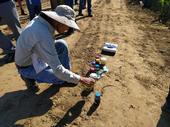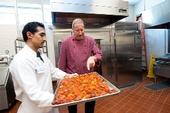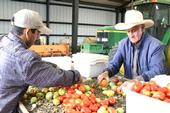- Author: Mariah Coley
- Author: Aubrey White

On a recent late-summer Wednesday, a freight container filled with cases of expired Muscle Milk protein drink awaited unloading at the UC Davis Renewable Energy Anaerobic Digester (READ) while a front-loader scooped heaps of spoiled vegetables into a mechanical processor. Nourished by a diet of assorted food waste from the UC Davis campus and area restaurants and markets, READ harnesses the activity of billions of microbes to produce biogas capable of generating 5.6 million kWh per year of clean electricity for UC Davis.
But a by-product of READ and other anaerobic digesters – the slurry of leftover solid and liquid material, or digestate – has caught the attention of UC Davis researchers interested in “closing...
- Author: Ann King Filmer

Today's dorm food is far superior to the tasteless, over-processed foods of decades past. No more mystery meat or mushy vegetables. Campus dining services across the country are providing a diversity of fresher and healthier foods, much to the delight of food-savvy students who want variety, flavor, and nutritious choices. Well... being students, they don't always make the healthiest choices, but educational programs at campus dorms are turning the tide toward more-healthful eating.
At the same time, chefs and food buyers at universities, particularly the University of California, are selecting for high-quality fruits and vegetables,...
- Author: Colin Bishop

Workers sort tomatoes at Russell Ranch
Part of our mission at the Agricultural Sustainability Institute at UC Davis is to ensure access to healthy food. So we’ve focused much of our work on the intersection between agriculture and human nutrition.
An interesting new field of study in this area looks at flavonoids, which are compounds in fruits and vegetables thought to have beneficial antioxidant effects and other medicinal value – they may even help reduce cancer risk.
Measuring the amount of flavonoids is one way we can figure out just how...



